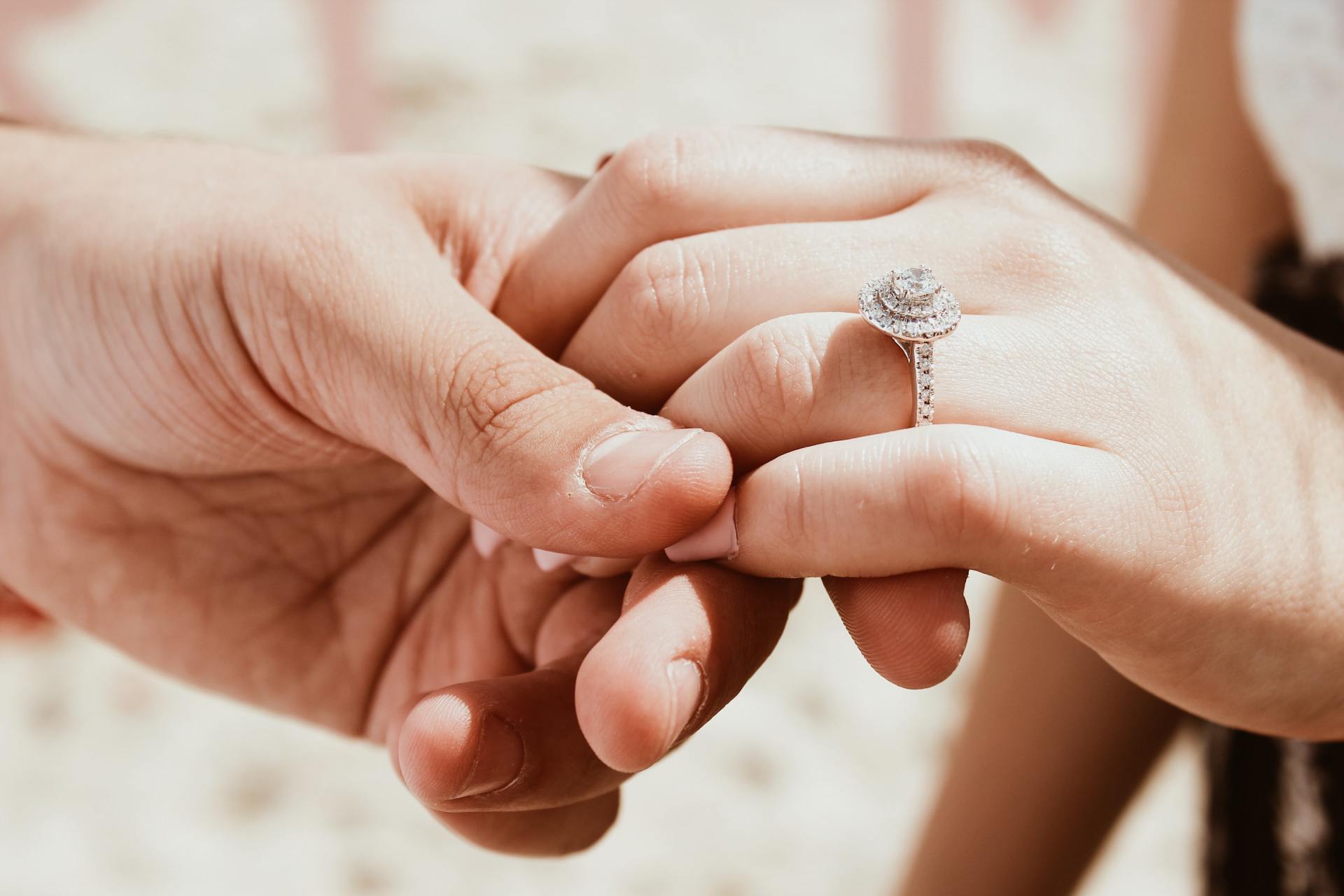Diamond Characteristics
Each of the 4 C's play a role in the diamonds beauty and interact with one another within each diamond. A Diamonds 4 C's represent the four main components of its natural structural beauty. Cut, Clarity, Colour and Carat. When looking at a diamond, the eye perceives a balance of all these characteristics and components

Cuts vary from diamond to diamond and detriments how cutters chose to shape, facet and polish the diamond. Experts consider the cut to be the most important factor out of the 4 C's because the brilliance and fire of a diamond depends greatly on its cut. A diamond's sparkle depends on its ability to take in light, then reflect the light back out. The more light the diamond reflects from its facets, the more sparkly it will typically look. Picking the right setting for your diamond that allows better light to enter through the diamond and reflect back out is also something to consider. Knowing the basics of these gradings is helpful when comparing two similar diamonds, but what remains important is how the diamond appears to the naked eye. Having an understanding of the 4 C's is imperative as a buyer so that you can avoid spending your budget on a component that will go unnoticed. Without finding the right balance between the 4 C's, you will end up over paying for certain characteristics while not spending enough on others.
Cut
The Diamond's cut specifically refers to the quality of a diamonds angles, proportions, symmetrical facets, brilliance, fire, scintillation and finishing details. These factors directly impact a diamonds ability to sparkle. It is important to know that the clarity can also affect the cut grade (which will be detailed further along) A diamonds cut grade is on a scale of Excellent, Very Good, Good, Fair & Poor. Cut is the most focal point on your diamond selection when it comes to the 4 C's as if it is not cut well it will appear rather dull. Cut should be made priority over the other 4 C's.
Colour
I always say colour is more important over clarity as its something you see to the naked eye. All diamonds are graded from the bottom (strange I know as you never look at them from that perspective) In most cases the naked eye cannot tell the difference between two adjacent colour graded diamonds although the price difference may be significant. In my personal opinion, all diamonds graded H-I and above are of good colour. Some Labs can be a little more generous with their gradings but you must always allow 1-2 differences of opinion between certification company's as it is simply just that, a grading based on their opinion from their perspective.
Clarity
A diamond's clarity grade evaluates how clean a diamond is from natural inclusions and blemishes and is graded on the following scale:
FL ~ Flawless
IF ~ Internally Flawless
VVS1 ~ Very, very slight inclusions graded 1 and difficult for a skilled grader to to see under 10 x magnification
VVS2 ~ Very Very Slightly Inclusions graded 2 and difficult for a skilled grader to detect under 10 x magnification
VS1 ~ Very Slight Inclusion graded 1 - only visible through a jewellers loupe
VS2 ~ Very slight inclusion graded 2 - only visible through a jewellers loupe
SI1 ~ Slightly included graded 1 - only visible through a jewellers loupe
SI2 ~ Slightly included graded 2 - only visible through a jewellers loupe
SI3 ~ Slightly Included graded 3 - can be visible to the naked eye
I1 ~ Visible inclusions grade 1
I2 ~ Visible inclusions grade 2
Depending on the size, location and darkness of the blemishes and inclusions, these imperfections can interfere with light as it passes through the diamond. When this happens, the brilliance and beauty of the diamond is dulled, taking away from the high quality cut. A Diamonds' certification will not tell you how a diamonds blemishes will impact the stones appearance and brilliance.
Diamond inclusions to avoid include:
Black Carbon spots
- Inclusions in the top & centre of the diamond
- Cracks or fractures running through your diamond
- Indented Naturals (inclusions that run to the edge of the diamond making it more susceptible to chips and cracking if knocked on its weak spot). You can normally feel these if you run your finger around the diamonds' girdle.
Carat Weight
Often when you hear the term carat, you think of the size of the diamond. In actuality, carat refers to the weight of the diamond, not how large the diamond is. A 1 carat diamond equals 200 milligrams, or 0.2 grams. Depending on the diamonds shape and how its cut, two 1 carat diamonds might be quite different in size. While carat weight is an element to consider when buying a diamond the overall appearance and brilliance should carry more importance. My favourite term when considering the 4 C's (although I generally only think the cut, colour and clarity is important) Carat is dependant on preference) is its all swings and roundabouts. You can get a beautiful 1ct diamond, graded I colour, SI2 clarity, Excellent cut, and compare it to a 1ct F Colour, VS1 clarity, Very Good Cut diamond, and you would not be able to differentiate between the 2 diamonds except for the substantial price difference. My best advice is to work with what you have in terms of budget and ask for my professional opinion if you are struggling to chose the best option for you. I will always do my upmost best to get the best stone for the budget you have, I don't see why anyone should have to compromise on its beauty based on budget, there are always alternatives whether you compromise one thing for another.

